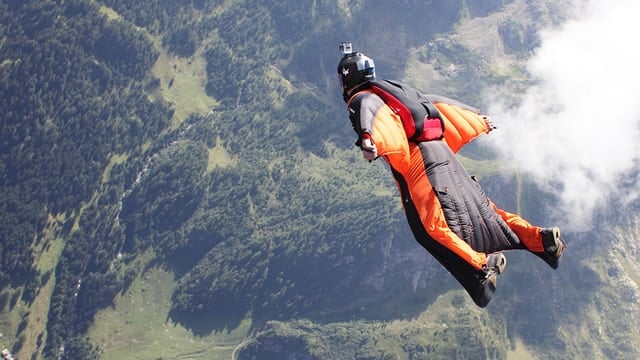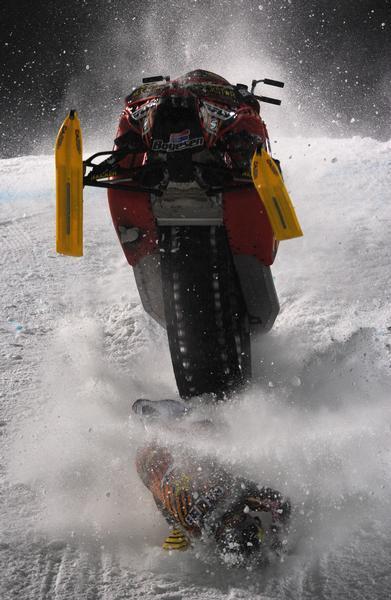Extreme Sports Fatalities: How Dangerous Is It Really?
By name, extreme sports have an inherent level of danger that comes with participating in them.
While advances in safety technology have made most sports safer than they were a few decades ago, the thirst for adrenaline some athletes have will always see them pushing the envelope beyond limits that can guarantee their safety.
Unfortunately, this means fatalities are inevitable. Warning: This post contains videos of serious accidents that may upset some readers.
The Deadliest Extreme Sports

Most action/adventure sports athletes don’t have anything remotely close to a death wish, and it’s unfair to act like freerunning, free diving, and cliff diving all are equally as dangerous.
So statistically, what are the biggest killers in extreme sports?
It’s not the easiest thing to study, but most tallies of extreme sports deaths list BASE jumping (jumping off a tall building, cliff, tower, etc. with only a parachute) as the most lethal sport.
Illegal in many places, some reports estimate there is one death for every 60 participants. BASE jumping deaths have been so common over the past few decades that a comprehensive fatality list doesn’t even exist, though a few sites have made the attempt.
A level beyond BASE jumping is wingsuit jumping, a newer variation which sees jumpers wearing a flying squirrel-esque suit that allows the wearer to fly horizontal to the earth at speeds up to 140MPH.
While it’s given us some unbelievable GoPro videos, it’s also resulted in quite a few deaths in its short history (including Uli Emanuele, the jumper in that video).
So how does everything else measure up to BASE/wingsuit jumping? Fatality rates in these types of activities are incredibly difficult to accurately track and classify.
Although a 2015 study in the Orthopaedic Journal of Sports Medicine examined the rates of head and neck injuries in seven extreme sports and came up with the following:
- Skateboarding: 129,600 head and neck injuries between 2000-2011
- Snowboarding: 97,527
- Skiing: 83,313
- Motocross: 78,236
- Surfing: 39,758
- Snowmobiling: 16,448
- Mountain biking: 15,233
What Happens When a Fatality Occurs

Of course, these numbers take into account recreational participants and not just those testing the limits at the sport’s highest level. Amongst the pros, severe injuries are far more common and tragic deaths sometimes occur even during live competitions.
The X-Games are largely credited with popularizing and bringing extreme sports to a mainstream audience.
Perhaps amazingly, it wasn’t until Winter X Games 17 (in 2013) that an athlete died from injuries sustained while competing.
Snowmobiler Caleb Moore failed to cleanly land a backflip during the best trick competition, resulting in the machine flipping on top of him. While he would walk off under his own power, he would die in the hospital week later due to a brain complication.
Although this particular event would eventually be cancelled a few years later (see below), after Moore was stretchered off that night it continued on as planned.
Perhaps strangely, this isn’t uncommon.
When athletes are rushed off to the hospital with life-threatening injuries, fans often have no clue about the fate of the athlete until long after the event is over.
Another example of this is motocross rider Jeremy Lusk, who died from injuries sustained in a freestyle motocross competition in 2009 – after he was whisked away on a stretcher (to great applause), the event continued on as normal.
Making Extreme Sports Safer
Seeing top athletes die generally isn’t a great way to attract fans and interest to your sport. Thankfully, advances in technology have made sports like hang gliding, skiing, and skydiving safer than ever before.
For trick-based sports, things like foam pits have made practicing more risky tricks much safer.

Yet in other instances, safety remains surprisingly optional.
At the X-Games for instance, skateboarders can still opt to go helmet free in some events, sometimes resulting in gnarly injuries like Ben Hatchell slamming his head on the pavement in 2013.
The Best Trick competitions for Snowmobile and Moto X were cancelled, though the latter only for two years.
Given that competitions like this actively encourage the pushing of safety limits, it’s a surprise we haven’t seen more incidents like Jake Brown’s in 2009:
But given extreme sports’ popularity and the demand to go bigger, higher, and faster, these injuires. unfortunately seem inevitable.


